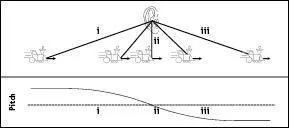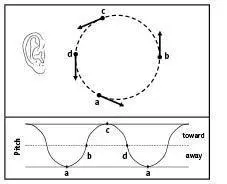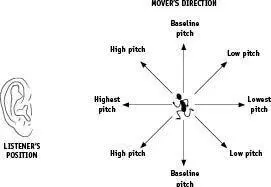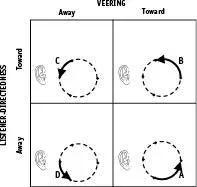Mark Changizi - Harnessed - How Language and Music Mimicked Nature and Transformed Ape to Man
Здесь есть возможность читать онлайн «Mark Changizi - Harnessed - How Language and Music Mimicked Nature and Transformed Ape to Man» весь текст электронной книги совершенно бесплатно (целиком полную версию без сокращений). В некоторых случаях можно слушать аудио, скачать через торрент в формате fb2 и присутствует краткое содержание. Год выпуска: 2011, Издательство: Perseus Books Group, Жанр: Старинная литература, на английском языке. Описание произведения, (предисловие) а так же отзывы посетителей доступны на портале библиотеки ЛибКат.
- Название:Harnessed: How Language and Music Mimicked Nature and Transformed Ape to Man
- Автор:
- Издательство:Perseus Books Group
- Жанр:
- Год:2011
- ISBN:нет данных
- Рейтинг книги:5 / 5. Голосов: 1
-
Избранное:Добавить в избранное
- Отзывы:
-
Ваша оценка:
- 100
- 1
- 2
- 3
- 4
- 5
Harnessed: How Language and Music Mimicked Nature and Transformed Ape to Man: краткое содержание, описание и аннотация
Предлагаем к чтению аннотацию, описание, краткое содержание или предисловие (зависит от того, что написал сам автор книги «Harnessed: How Language and Music Mimicked Nature and Transformed Ape to Man»). Если вы не нашли необходимую информацию о книге — напишите в комментариях, мы постараемся отыскать её.
Harnessed: How Language and Music Mimicked Nature and Transformed Ape to Man — читать онлайн бесплатно полную книгу (весь текст) целиком
Ниже представлен текст книги, разбитый по страницам. Система сохранения места последней прочитанной страницы, позволяет с удобством читать онлайн бесплатно книгу «Harnessed: How Language and Music Mimicked Nature and Transformed Ape to Man», без необходимости каждый раз заново искать на чём Вы остановились. Поставьте закладку, и сможете в любой момент перейти на страницу, на которой закончили чтение.
Интервал:
Закладка:
To illustrate the connection between pitch and directedness toward you, let’s go back to our generic train example and assume the track is straight. When a train is far away but approaching the station platform where you are standing, it is going almost directly toward you, as illustrated in Figure 24i. This is when its pitch will be Doppler shifted upward the most. (High and constant pitch is, by the way, the signature of an impending collision.) As the train nears, it gets less and less directed toward you, eventually to pass you by. Its pitch thus drops to an intermediate, or baseline, value when it reaches its nearest point to you and is momentarily moving neither toward nor away from you (see Figure 24ii). As the train begins to move away from you, its pitch falls below its intermediate value and continues to go lower and lower until it reaches its minimum, when headed directly away (see Figure 24iii). (If, by the way, you were unwisely standing on the tracks instead of on the platform, then the train’s pitch would have remained at its maximum the entire period of time it approached. Then, just after the sound of your body splatting, the train’s pitch would instantaneously drop to its lowest pitch. Of course, you would be in no condition to hear this pitch drop.)

Figure 24. Illustration that the pitch of a mover (relative to the baseline pitch) indicates the mover’s directedness toward you. When the train is headed directly toward the observer, pitch is at its maximum (i), and is at its lowest when headed directly away (iii); in between the pitch is in between (ii).
As a further illustration of the relationship between pitch and mover direction, suppose that a mover is going around in a circle out in front of you (not around you). At (a) in Figure 25 the mover is headed directly away, and so has minimum pitch. The mover begins to turn around for a return, and pitch accordingly rises to a baseline, or intermediate, level at (b). The mover now begins veering toward you, raising the pitch higher, until the mover is headed directly toward you at (c), at which point the pitch is at its maximum. Now the mover begins veering away from you so as not to collide, and pitch falls back to baseline at position (d), only to fall further as the mover moves away to (a) again.

Figure 25. The upper section shows a mover moving in a circle out in front of the listener (the ear), indicating four specific spots along the path. The lower part of the figure shows the pitch at these four spots on the path. (a)When moving directly away, pitch is at its minimum. (b)Pitch rises to baseline when at the greatest distance and moving neither toward nor away. (c)Pitch rises further to its maximum when headed directly toward the listener. (d)Pitch then falls back to baseline when passing tangentially nearby. The pitch then falls back to its minimum again at (a), completing the circle.
From our experience with the train and looping-mover illustrations, we can now build the simple “dictionary” of pitches shown in Figure 26. Given a pitch within a range of pitches, the figure tells us the pitch’s meaning: a direction of the mover relative to the listener. In the dictionary of nature, pitch means degree of directedness toward you.

Figure 26.Summary of the “meaning” of pitch, relative to baseline pitch. (The actual mapping from direction to pitch is non-linear, something we discuss later in the upcoming section.)
This pitch dictionary is useful, but only to a limited extent. Doppler pitches tend to be fluctuating when you hear them, whether because movers are merely going straight past you (as in Figure 24), or because movers are turning (as in Figure 25). These dynamic pitch changes, in combination with the pitch dictionary, are a source of rich information for a listener. Whereas pitches above and below baseline mean an approaching or receding mover, respectively, changing pitch tells us about the mover’s turning and veering behavior. A rising pitch means that the mover is becoming increasingly directed toward the listener; the mover is veering more toward you. And falling pitch means that the mover is becoming decreasingly directed toward the listener; the mover is veering more away from you. One can see this in Figure 25. From (a) through (c) the mover is veering more toward the listener, and the pitch is rising throughout. In the other portion of the circular path, from (c) to (a) via (d), the mover is veering away from the listener, and the pitch is falling .
To summarize, pitch informs us of the mover’s direction relative to us, and pitch change informs us of change of direction—the mover’s veering behavior. High and low pitches mean an approaching and a receding mover, respectively; rising and falling pitches mean a mover who is veering toward or away from the listener, respectively. We have, then, the following two fundamental pitch-related meanings:
Pitch: Low pitch means a receding mover. High pitch means an approaching mover.
Pitch change: Falling pitch means a mover veering more away . Rising pitch means a mover veering more toward .
Because movers can be approaching or receding and at the same time veering toward or away, there are 2 × 2 = 4 qualitatively distinct cases, each defining a distinct signature of the mover’s behavior, as enumerated below and summarized in Figure 27.
(A) Moving away, veering toward.
(B) Moving toward, veering toward.
(C) Moving toward, veering away.
(D) Moving away, veering away.

Figure 27. Four qualitatively distinct categories of movement given that a mover may move toward or away, and may veer toward or away. (I have given them alphabet labels starting at the bottom right and moving counterclockwise to the other three squares of the table, although my reason for ordering them in this way won’t be apparent until later in the chapter. I will suggest later that the sequence A-B-C-D is a generic, or most common, kind of encounter.)
These four directional arcs can be thought of as the fundamental “atoms” of movement out of which more complex trajectories are built. The straight-moving train of Figure 24, for example, can be described as C followed by D, that is, veering away over the entire encounter, but first nearing, followed by receding. (As I will discuss in more detail in the Encore section titled “Newton’s First Law of Music,” straight-moving movers passing by a listener are effectively veering away from the listener.)
These four fundamental cases of movement have their own pitch signatures, enumerated below and summarized in Figure 28.
(E) Low, rising pitchmeans moving away, veering toward.
Читать дальшеИнтервал:
Закладка:
Похожие книги на «Harnessed: How Language and Music Mimicked Nature and Transformed Ape to Man»
Представляем Вашему вниманию похожие книги на «Harnessed: How Language and Music Mimicked Nature and Transformed Ape to Man» списком для выбора. Мы отобрали схожую по названию и смыслу литературу в надежде предоставить читателям больше вариантов отыскать новые, интересные, ещё непрочитанные произведения.
Обсуждение, отзывы о книге «Harnessed: How Language and Music Mimicked Nature and Transformed Ape to Man» и просто собственные мнения читателей. Оставьте ваши комментарии, напишите, что Вы думаете о произведении, его смысле или главных героях. Укажите что конкретно понравилось, а что нет, и почему Вы так считаете.












